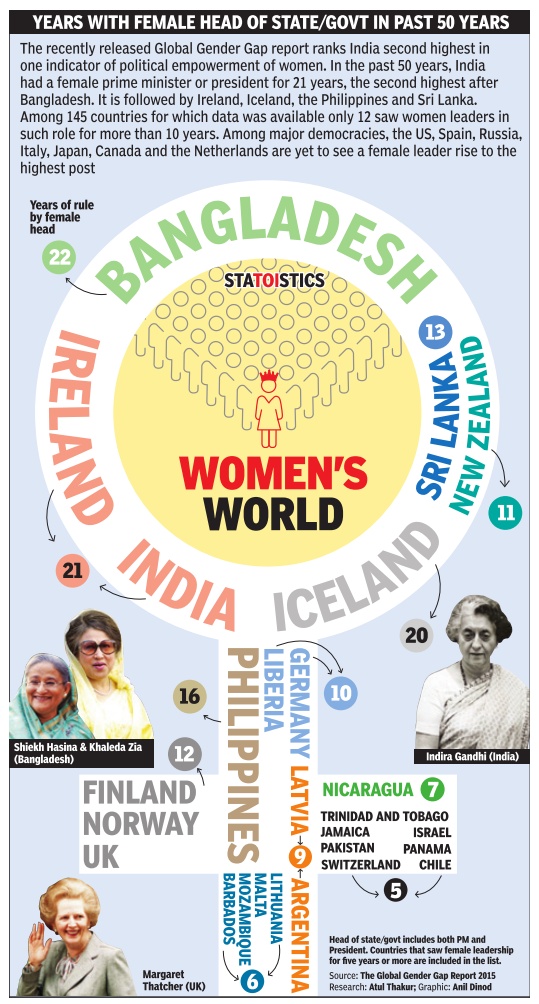Women in senior positions: South Asia

This is a collection of articles archived for the excellence of their content. |
Global Gender Gap, 2015: India improves rank
The Times of India, Nov 19 2015
Women mantris help reduce gender gap
India moves up from 114 to 108 rank
India has improved its ranking in the World Eco nomic Forum's Global Gender Gap report 2015 moving up from rank 114 in 2014 to 108 among 145 countries. The improvement has come mainly on the back of stronger representation of women in political leadership. However, in health survival India has regressed over the past decade and ranked third from bottom, 143 out of 145 countries. India's rise in the rankings was mostly thanks to a doubling of the number of women in ministerial positions, which pushed up the proportion of women in ministerial positions from 9% to 22%. In economic participation, India slipped five places to 139 out of 145 this year, the lowest position it has occupied on this criteria since the measuring of gender gap began in 2006. On this count, it has declined not only relative to its international peers, but also in absolute terms, with a wider gap today than 10 years ago, stated the report. India's ranking in health is pulled down by its ranking for one of the sub-indicators, sex ratio at birth, where it was ranked 143 ahead of only China and Armenia. The annual report put together by the WEF since 2006, measures the gap between men and women in health, education, economic opportunity and political representation.The overall ranking of a country is on the basis of its performance in these four areas.The top five ranks are dominated by Nordic countries.
Among the BRICS grouping, the highest-placed nation remained South Africa (17), supported by strong scores on political participation. Russia (75) was next, followed by Brazil (85), which lost 14 places this year due to growing wage gaps and a decline in the number of women in ministerial level positions. China (91) lost four places falling from its rank of 87 in 2014. Yemen remained at the bottom of the index as it has since 2006, despite significantly improving relative to its own past scores. The report noted that despite an additional quarter of a billion women entering the global workforce since 2006, wage inequality persists, with women only now earning what men did a decade ago.